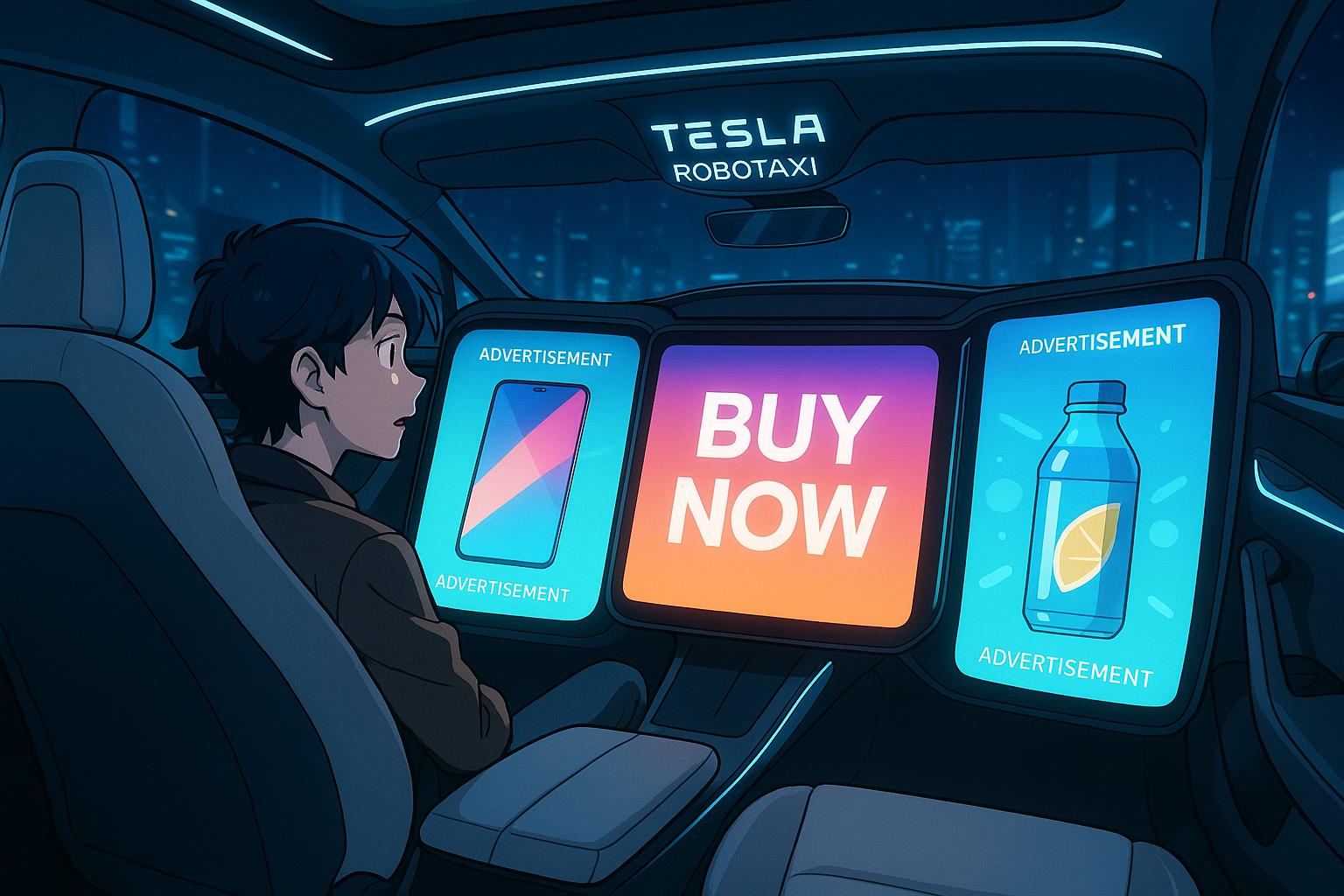As autonomous vehicles inch closer to becoming a common sight on our roads, a paradigm shift is occurring in the realm of advertising and consumer engagement. Tesla's ambitious rollout of its robotaxi fleet, set to launch in Austin with ten vehicles by the end of June, marks a pivotal moment not just in mobility but also in the evolution of retail media. Elon Musk, CEO of Tesla, envisions a fleet that will ultimately expand to 1,000 vehicles, paving the way for what could become a sophisticated advertising ecosystem within these self-driving cars.
These vehicles, equipped with screens in place of traditional controls, are being reimagined not merely as transportation but as immersive media spaces. With passengers guaranteed to be seated and facing screens, marketers are presented with a prime opportunity to capture attention in a way that traditional out-of-home (OOH) advertising cannot. As one agency executive pointed out, "It’s DOOH with a CRM system," indicating the fusion of advertising with customer relationship management tools.
New technologies, such as augmented reality-enabled windshields, could transform the passenger experience. Imagine dynamic advertisements, like a promotional coffee offer that appears as passengers pass a café, or interactive games that offer rewards or discounts based on engagement during the ride. Such innovations hinge on the ability to gather anonymised rider data, allowing for hyper-targeted marketing that not only acknowledges the context of a passenger's journey but also enhances their travel experience.
Significantly, the emergence of robotaxis occurs amid a surge in retail media, projected to grow at a remarkable 13% CAGR in the UK over the next five years. This expansion indicates a shift from traditional channels, such as in-store displays and grocery websites, to new environments where vehicles can become media assets themselves. Consequently, transportation morphs from a simple means of getting from point A to B into a multifaceted inventory of advertising potential.
In the UK, legislative steps like the Automated Vehicles Act are clearing the path for Level 4 self-driving cars, with trials already demonstrating the feasibility of this technology. Yet, public sentiment remains cautious; a recent YouGov poll revealed that 67% of respondents felt “unsafe” in a driverless car. Companies like Uber, prepared to launch their own robotaxi services, will need to bridge this trust gap if they are to convince potential passengers to embrace this new travel model.
However, the integration of media within autonomous vehicles does not come without its challenges. Questions surrounding data ownership and privacy loom large. A study from the Mozilla Foundation highlighted that many major automotive manufacturers collect and share personal data without proper consent from vehicle owners. This raises a critical debate — as the vehicle becomes a central hub for ads, who ultimately controls the data and profits from it? If the in-car advertising resembles intrusive digital pop-ups, it risks alienating users rather than enriching their experience.
As the landscape evolves, policymakers are grappling with the implications of connected vehicles. Recent regulations in the U.S. by bodies like the Federal Communications Commission (FCC) and the Federal Trade Commission (FTC) aim to address various concerns, including data privacy and national security related to the sharing of driver data. The tension between advancing technology and maintaining privacy and security will be pivotal in shaping future regulations and consumer acceptance.
Lastly, the successful integration of advertising within the ride experience will rely on seamless connectivity across various platforms. With a united approach — from billboards to mobile apps — brands can craft campaigns that resonate deeply with consumers. Instead of isolated ads, the ideal strategy will involve a cohesive narrative that enhances the overall journey, ensuring that the robotaxi is not merely viewed as a novelty, but as an essential part of the media landscape.
In conclusion, as the race for attention intensifies, the advent of self-driving cars presents a unique opportunity for advertisers to engage with consumers in unprecedented ways. The future may not only be driverless but also filled with digital interactions that redefine how brands connect with their audience. Being part of this movement could turn a routine journey into a dynamic marketing experience, if navigated wisely.
Reference Map
- Paragraphs 1-3: [1]
- Paragraphs 4-5: [1], [2]
- Paragraph 6: [1], [3], [4]
- Paragraph 7: [1], [5], [6], [7]
- Paragraphs 8-9: [1], [4]
Source: Noah Wire Services
